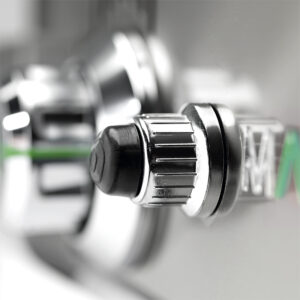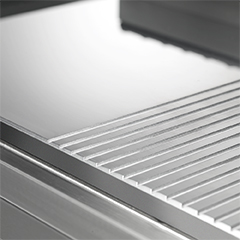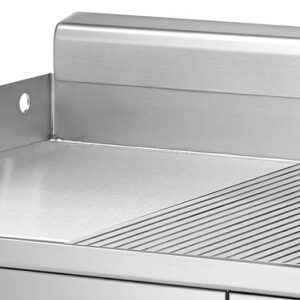Fry-Tops
Differences between fry-tops and industrial griddles.
1. The main difference lies in the superior thickness of the fry-top plate, which is generally between 12 to 20 mm.
Most fry-tops feature a plate thickness of 15 mm or more, setting them apart from standard kitchen griddles. Combined with greater power, this allows fry-tops to achieve higher and more consistent temperatures.The thicker plate retains heat more effectively, saving both time and energy and, in the long run, offering significant economic savings.The advantage of griddles, however, is that they heat up slightly faster due to their thinner plates.
2. Fry-tops have higher power output.
High-performance fry-tops can reach up to 37.5 kW, a level of power not found in standard griddles.Fry-tops are generally larger and heavier than kitchen griddles.If you have sufficient space in your kitchen and a high volume of dishes cooked on griddles, a fry-top is recommended for more efficient performance.Its larger cooking surface and independent controls allow you to prepare multiple types of food simultaneously while conserving energy if the workload varies.For smaller spaces with lower grilling production, a professional griddle is the better option.
3. Gas output for fry-tops is located at the rear of the plate.
This allows fry-tops to be installed alongside other cooking equipment, while griddles require more space as their gas outlets are located on the sides.











